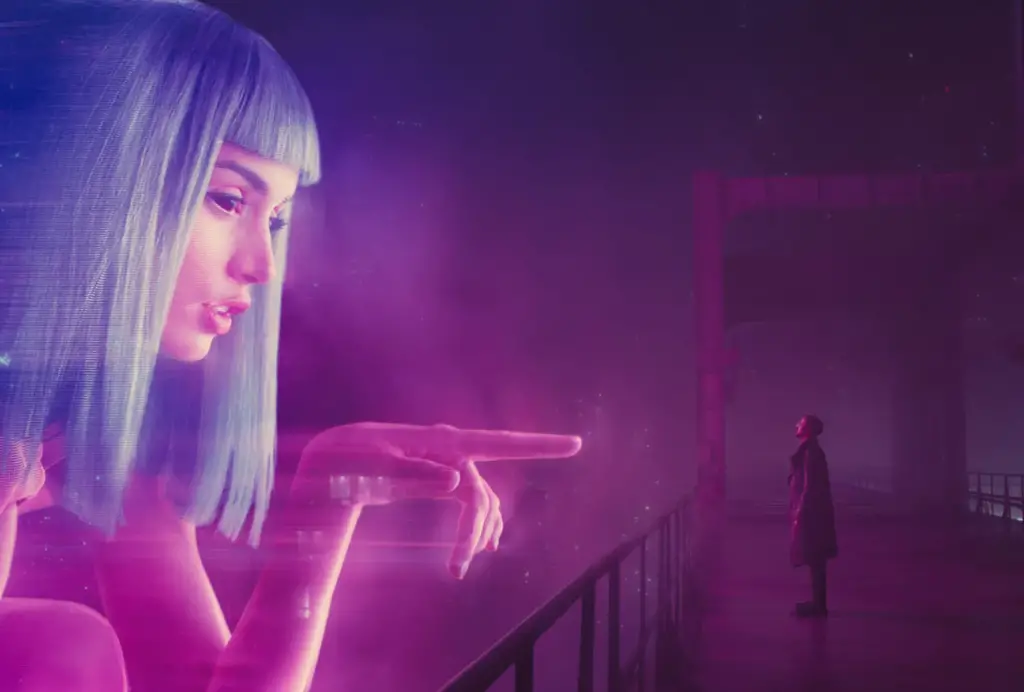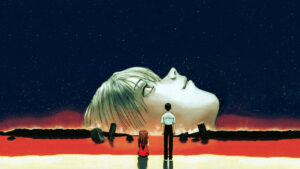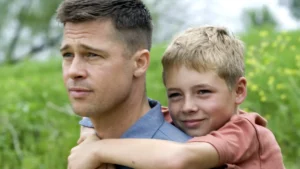Table of Contents
Introduction: Unraveling Blade Runner 2049
“Blade Runner 2049” takes viewers on a captivating journey through a dystopian future, where the lines between human and machine blur. In this thought-provoking sequel to the original film, we explore complex themes of identity, existence, and the essence of humanity.
As we delve into the various layers of this cinematic masterpiece, we will provide a comprehensive explanation of Blade Runner 2049 and its psychological and philosophical implications. The narrative challenges our perceptions and invites us to reflect on what it truly means to be alive in a world dominated by technology and artificial beings.
Prepare to embark on a deep exploration of the film’s themes, visual storytelling, and much more, allowing us to uncover the mind-bending truths and dark reflections that make “Blade Runner 2049” a modern classic.

Psychology of Identity and Humanity in Blade Runner 2049
In “Blade Runner 2049,” the exploration of identity and humanity is more than just a narrative device; it is the very essence that drives the film’s characters and their interactions. The story follows K, a replicant tasked with hunting down older model replicants, who finds himself grappling with questions about his own existence and the nature of being human.
The Quest for Identity
K’s journey is not merely one of self-discovery; it serves as an existential inquiry into what it means to have an identity. As a replicant, K occupies a unique position in society—he is programmed to serve but yearns to find purpose beyond his assigned role. The revelation that he might be more than just a manufactured being propels him deeper into a quest for understanding and acceptance. This internal struggle resonates with the audience as it raises fundamental questions about the nature of consciousness and the criteria that define humanity.
Human vs. Replicant: A Blurred Line
The film adeptly blurs the lines between human and replicant, prompting viewers to reconsider their preconceived notions. The replicants possess emotions, memories, and the capacity for love, showcasing the psychological complexity of their existence. Characters like Joi, K’s AI companion, further complicate this dynamic. Joi is designed to fulfill K’s emotional needs, but through their relationship, the film challenges the authenticity of love and connection. Is their bond genuine, or is it merely a product of K’s programming? These dilemmas invite audiences to reflect on the authenticity of their relationships and what it means to truly connect with one another.
Memory and Identity Formation
Memory plays a pivotal role in shaping identity within the film. For K, memories—whether real or artificially implanted—serve as the foundation of his sense of self. The revelation that K may have a real memory tied to a significant event further complicates his understanding of who he is. In this context, the film raises poignant questions about the reliability of memory and its influence on identity formation. Are we defined by our memories, both real and imagined? This inquiry echoes the psychological studies on memory and identity, emphasizing how deeply our past experiences shape our present selves.

In “Blade Runner 2049,” the psychological exploration of identity and humanity is a narrative thread that invites viewers to delve into their own understanding of existence. By examining K’s journey and the intricacies of human-replicant relationships, the film fosters a profound contemplation on what it truly means to be alive in a world where the lines of identity are increasingly obscured.
Philosophical Themes: Existence, Free Will, and Artificial Life
“Blade Runner 2049” delves deep into existential questions and philosophical musings about existence, free will, and the nature of artificial life. As the narrative unfolds, it presents viewers with dilemmas that explore what it means to be truly alive, emphasizing the complexities of identity and consciousness in a technologically advanced world.
Existence: What Does It Mean to Be Alive?
At its core, “Blade Runner 2049” grapples with the concept of existence. The film raises the question of what truly constitutes life. The replicants, designed as bioengineered beings, exhibit emotions, desires, and a sense of longing. K’s journey to uncover his own origins ultimately leads to the profound realization that existence goes beyond mere biology. The film suggests that the capacity for experiences—whether real or artificially constructed—shapes one’s essence.
Moreover, K’s search for meaning parallels humanity’s own quest for significance in a transient world. By positioning replicants as sentient beings capable of love and grief, the film prompts viewers to reflect on the profound nature of existence itself and the search for purpose that unites all living entities.
Free Will: Choice in a Determined World
The theme of free will permeates “Blade Runner 2049,” presenting a world where choices can feel predetermined. The replicants are engineered to serve specific functions, leading to a discussion about the extent to which they can truly exercise free will. K initially embodies this notion—programmed to follow orders, he grapples with the realization that he yearns for autonomy.
As the narrative progresses, K’s journey challenges the notion of predestination. He becomes increasingly aware of his ability to make choices, culminating in pivotal decisions that affect not only his fate but also the potential future of replicants. This exploration emphasizes the philosophical debate over free will: are our choices genuinely our own, or are they influenced by external factors beyond our control?
Artificial Life and Its Implications
The film also prompts viewers to consider the philosophical implications of artificial life. The existence of replicants raises questions about what it means to create life and the ethical responsibilities tied to such creation. The line between creator and creation blurs as replicants demonstrate their capacity for thought, emotion, and self-awareness.
Furthermore, K’s relationship with Joi—a highly advanced AI companion—invites contemplation on the authenticity of love and connection. Is Joi a mere simulation responding to K’s needs, or does she represent a form of companionship that transcends her artificial nature? This aspect challenges the audience to rethink the boundaries of relationships in an age where artificial intelligence can display traits previously reserved for humans.

Through these philosophical themes of existence, free will, and artificial life, “Blade Runner 2049” invites viewers to engage in a thoughtful dialogue about the nature of consciousness and the ethical considerations surrounding the creation of life. The film’s rich narrative encourages reflection on our perceptions of existence and challenges us to confront the profound questions that lie at the heart of our own humanity.
Ending Explained: The Fate of K and the Hope for Humanity
The concluding moments of “Blade Runner 2049” encompass a profound emotional weight, encapsulating the fates of its characters while simultaneously igniting themes of hope and perseverance for humanity. K’s journey culminates in a poignant confrontation that underscores the film’s overarching narrative about identity, sacrifice, and the potential for change.
K’s Sacrificial Choice
Throughout “Blade Runner 2049,” K wrestles with his identity and the implications of being a replicant. In the film’s climactic moments, he discovers that he is not the prophesied child of a replicant and that his origins are rooted in artificiality. However, this revelation doesn’t deter K from making a critical decision. He embraces the role of a protector, choosing to help Deckard reunite with his daughter, Ana, the first replicant-born human. K’s willingness to sacrifice himself is a profound testament to his growth and evolution as a character.
In his final moments, as he lies wounded in the snowy streets of Los Angeles, K’s actions take on an emblematic significance. He finds a sense of purpose and agency in his choice to aid someone who is truly important. This act of defiance against his predetermined role showcases K’s transformation, elevating him from a mere product of design to a being capable of selfless love.
The Symbolism of Hope
K’s fate serves as a beacon of hope amid a bleak landscape. His sacrifice conveys a powerful message: though life may be fraught with struggle, the impact of individual choices can lead to change, no matter how small. The image of K lying peacefully in the snow encapsulates the theme of rebirth—paralleling the broader narrative of humanity’s quest for freedom and understanding in an oppressive world.
Additionally, K’s journey aligns with the struggle of replicants seeking recognition and value in a society that views them as mere tools. By rescuing Deckard, K exemplifies a turning point where the oppressed could rise to challenge their fate, inspiring the hope that one day, humanity and artificial life could coexist in harmony.
Deckard’s Reunion: A New Beginning
The reunion between Deckard and Ana signifies an essential moment not only for the characters but for the future of their world. Deckard, a troubled figure from the past, is given a chance for redemption through his connection to the next generation. The hope that Ana represents is crystallized in the final scene, where they can create a genuine bond, ideologically suggesting that love transcends constructed barriers—be they of design, species, or societal norms.
In this light, “Blade Runner 2049” challenges viewers to consider the potential for healing within fractured identities and relationships. K’s journey speaks to the resilience of the human spirit, underscoring that even in a world overshadowed by technology and desolation, the capacity for love, connection, and change persists.

Visual and Narrative Techniques in Blade Runner 2049
“Blade Runner 2049” is not only a philosophical exploration but also a masterclass in visual and narrative storytelling. The film employs a variety of techniques to immerse viewers in its richly constructed world and enhance its themes of identity, humanity, and morality.
Cinematic Aesthetics
The visual style of “Blade Runner 2049” is significantly influenced by its predecessor, with director Denis Villeneuve and cinematographer Roger Deakins creating a stunning aesthetic that combines atmospheric elements with intricate detail. The use of color is particularly striking; the film contrasts desaturated environments with vibrant hues to represent emotional highs and lows. For instance, the stark, bleak tones of the urban landscape emphasize the isolation and despair experienced by the characters, while moments of warmth and color—such as those in K’s relationship with Joi—highlight moments of connection.
The strategic use of lighting further complements the narrative. Soft lighting permeates intimate scenes, creating an emotional resonance between characters, while harsh shadows accentuate the uncertainty and danger present in K’s journey. This juxtaposition not only serves to enhance the film’s visual storytelling but also reflects the internal struggles faced by replicants and humans alike.
Narrative Structure and Pacing
The narrative structure of “Blade Runner 2049” employs a slow-burn approach, allowing viewers to deeply engage with the themes and characters as they unfold. The pacing invites contemplation, reflecting the philosophical underpinnings of the story. This deliberate unfolding contrasts with conventional action films, encouraging audiences to reflect on K’s internal dilemmas and personal growth rather than solely focusing on plot mechanics.
The film utilizes parallel narratives, intertwining K’s journey with Deckard’s past and the quest for the replicant-born child. This narrative layering creates a rich tapestry that reflects the interconnectedness of their fates while maintaining thematic consistency. K’s search to understand his existence is mirrored by Deckard’s journey to reconnect with his daughter, revealing how personal quests for identity transcend the boundaries of design and biology.
Sound Design and Score
The sound design in “Blade Runner 2049” contributes significantly to its immersive atmosphere. The subtle layering of sound effects, such as the hum of city life or the mechanical sounds of flying cars, envelops the audience in the dystopian world. This auditory backdrop enhances the visual experience, making the environment feel lived-in and organic.
Additionally, Hans Zimmer’s haunting score complements the film’s mood, featuring a blend of ethereal sounds and orchestral arrangements that elevate emotional scenes. The music resonates with the film’s themes of longing and existential crisis, drawing viewers into K’s internal struggle and the film’s overall narrative arc. The score serves to underline pivotal moments, reminding the audience of the profound emotional currents at play.

Through its exceptional visual and narrative techniques, “Blade Runner 2049” captures the complexity of its themes, providing an engaging experience that lingers long after the film ends. The combination of aesthetic beauty, thoughtful pacing, and immersive sound design invites audiences to delve into a world that challenges perceptions of identity and humanity.
Recommended Reading: Books Aligned with the Themes of Blade Runner 2049
“Blade Runner 2049” engages with themes of identity, existence, and the nature of humanity, inviting viewers to explore these profound questions further. Here are five book recommendations that resonate with the philosophical and psychological undercurrents of the film:
Margaret Atwood’s “Oryx and Crake” delves into a dystopian future where genetic engineering blurs the boundaries of life and morality. The novel explores themes of humanity’s role in manipulating nature and the consequences that arise from such actions, paralleling the ethical dilemmas faced in “Blade Runner 2049.” Readers will find Atwood’s thought-provoking narrative enriches their understanding of artificial life and the responsibilities of creation.
Buy Oryx and Crake here
Philip K. Dick’s “Do Androids Dream of Electric Sheep?”, the original novel inspiring the “Blade Runner” franchise, poses questions about what it means to be human. The story interrogates empathy, identity, and the implications of artificial intelligence, making it a perfect companion to the film’s exploration of replicants and their search for meaning. Dick’s nuanced approach challenges the reader’s perception of reality and artificiality.
Buy Do Androids Dream of Electric Sheep? here
Ishiguro Kazuo’s “Never Let Me Go” presents a poignant narrative that intertwines themes of humanity and the ethics of cloning. The story follows individuals raised for organ donation, raising questions about the value of life, identity, and what it means to love and be loved. This exploration of the complexities of existence aligns closely with the emotional depth portrayed in “Blade Runner 2049.”
Buy Never Let Me Go here
Arthur C. Clarke’s “2001: A Space Odyssey” is a seminal work that examines artificial intelligence, humanity’s evolution, and the intersection of technology and consciousness. The narrative invites readers to ponder the nature of existence and the potential futures influenced by artificial beings. Clarke’s visionary approach adds an additional layer of contemplation on the themes explored in the film.
Buy 2001: A Space Odyssey here
Lastly, “The Second Machine Age: Work, Progress, and Prosperity in a Time of Brilliant Technologies” by Erik Brynjolfsson and Andrew McAfee, discusses the implications of rapid technological advancement on society. The authors critically analyze the relationship between humans and machines, making it a contemporary reflection of the evolving conversations surrounding AI, much like those raised in “Blade Runner 2049.”
Buy The Second Machine Age here
Conclusion: Reflecting on the Depths of Blade Runner 2049
In “Blade Runner 2049,” the intricate tapestry of themes related to identity, existence, and the nature of humanity invites viewers to engage in deep reflection. Throughout this exploration, we’ve dissected the psychological and philosophical layers that make the film a profound experience.
The keyword that encapsulates this journey—Blade Runner 2049 Explained—highlights the film’s capacity to provoke thought and inspire discussion. As K’s story unfolds, we see a mirror reflecting our own struggles for identity and purpose in an ever-evolving world dominated by technology.
Ultimately, “Blade Runner 2049” serves not just as a continuation of a beloved narrative, but as a philosophical inquiry into what it means to be human. Its stunning visuals and rich storytelling create a platform for us to grapple with these questions, reminding us that the quest for meaning transcends the boundaries of design and existence.
Take a look at all our in-depth reviews here.




